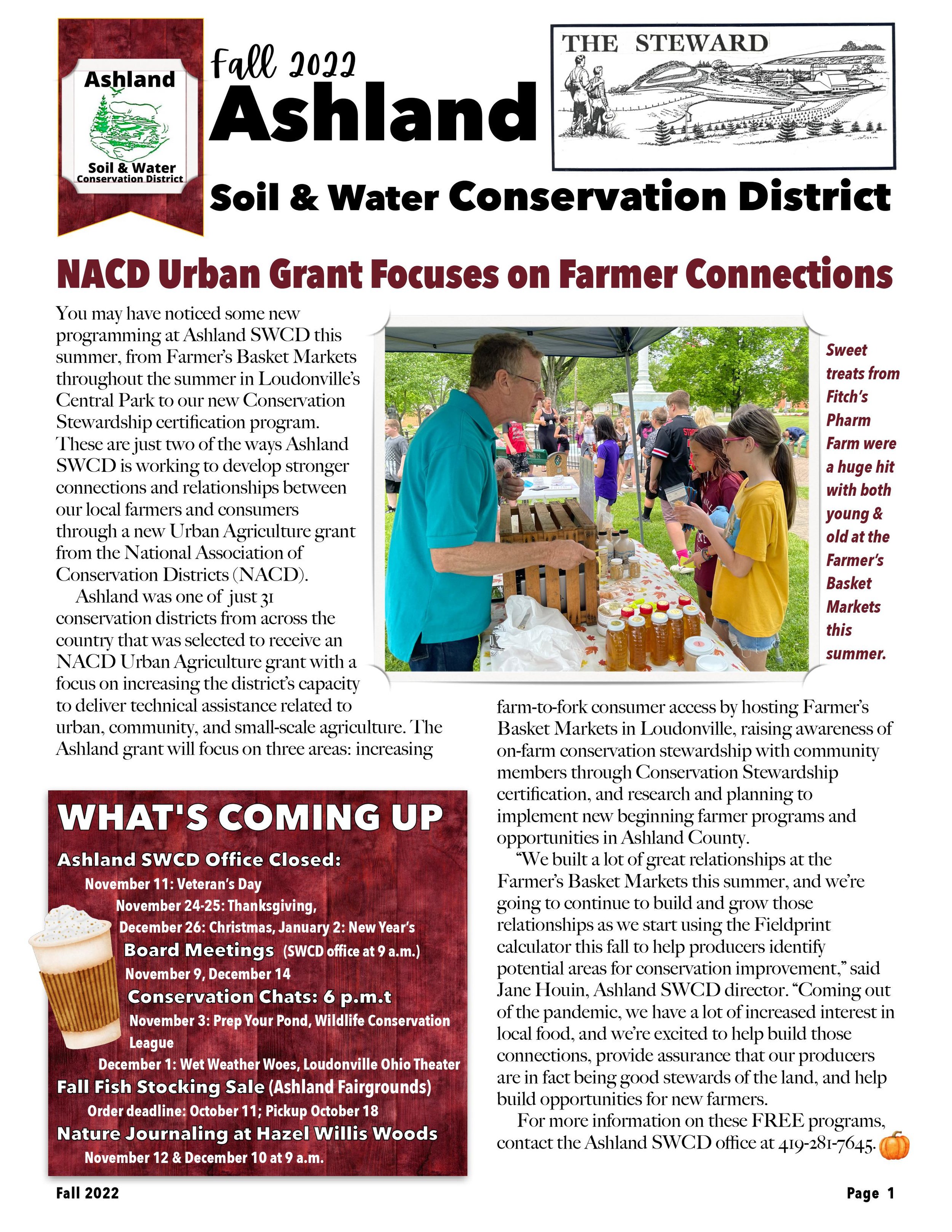NACD Grant Provided Connections to Local Farmers in Ashland County
Ashland Soil and Water Conservation District (Ohio) focused their 2022-23 NACD Urban Ag grant on developing local food connections through conservation stewardship. The grant allowed them to expand their staffing by bringing on a 30-hour per week outreach specialist to help implement program projects.
Their grant was built with two primary focuses: expanding local food access and farm connections through a Farmer’s Basket Market in Loudonville during the summer of 2022 providing certified conservation stewardship opportunities for Ashland County farmers.
Staff partnered with the Village of Loudonville, the Loudonville Public Library ,, Loudonville-Perrysville schools and local producers to host farmer’s markets in downtown Loudonville throughout the summer. The markets used the University of Minnesota’s Power of Produce model, where students received a voucher to spend with any market vendor after participating in that week’s educational event at the market. Educational events were provided by groups including local FFA chapters, Ohio Scenic Rivers, Mohican State Park, and more. This was a valuable tool to area families to increase access to local fresh food, and kids in an area where over 53 percent of students are eligible for free or reduced lunches.
These markets also provided a connection point with local producers who participated as vendors in the Farmer’s Basket Markets. SWCD staff were able to develop relationships with these direct-to-consumer producers, which in many cases led to the producers participating in the district’s conservation stewardship certification program.
This program provided benefits to the producers as a marketing tool to their customers as well as by providing an opportunity to examine their operations and identify areas for potential conservation improvements. The certification program utilized Field to Market’s Fieldprint Calculator to measure on-farm sustainability using eight metrics: biodiversity, energy use, greenhouse gas emissions, irrigation, water use, land use, soil carbon, soil conservation and water quality. The tool then compares those numbers agains state and national benchmarks to identify areas for potential sustainability growth and it a great tool to start conservation conversations.
The district was also able to host monthly Conservation Chats, many of which focused on areas of interest identified by the producers, including Rain Barrel Basics, Wet Weather Woes, Crawdad Derby, Great Grazing, CAUV Scoop, All About Arbor Day, Plants Gone Wild, Growing Money, Future of the Family Farm, and A Day in the Uplands.

